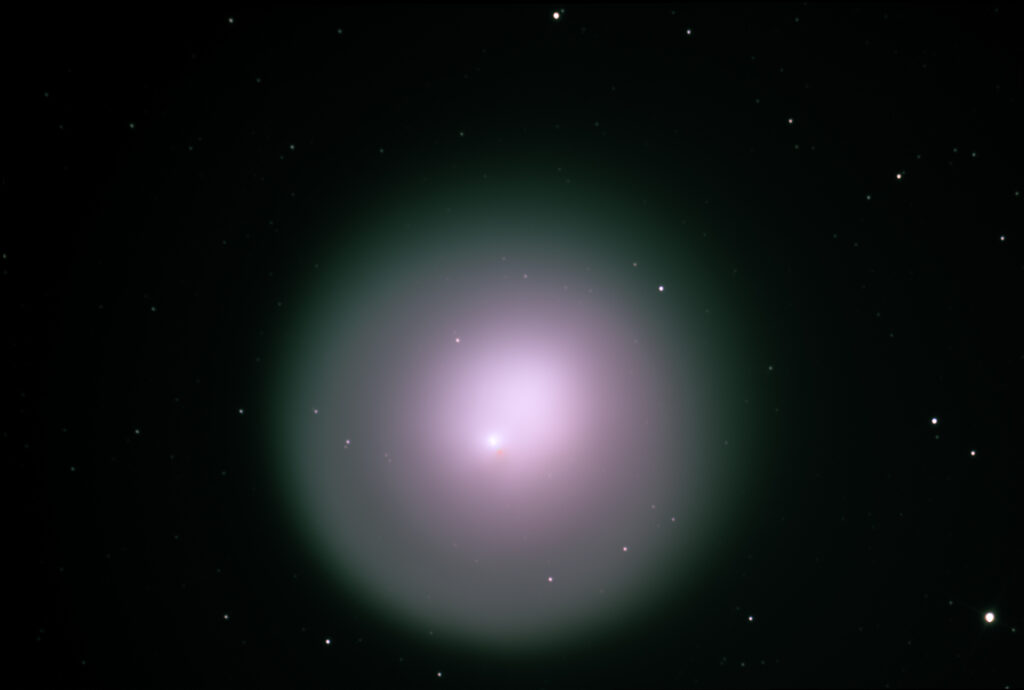In 1898, an English astronomer named Edwin Holmes discovered a comet in the constellation Andromeda. It was named Comet Holmes in honor of its discoverer. On October 24, 2007, this comet was a faint speck between the orbits of Mars and Jupiter, visible only in the largest telescopes. Then, suddenly, in a matter of a few hours, it increased in brightness a million-fold, and became a naked eye object visible in heavily light-polluted cities.
It is not clear what caused this eruption, since comets ordinarily do not increase in brightness until they are near perihelion (closest distance to the Sun) where solar radiation strips away and illuminates tons of dust and gas.
I took this 30-minute image on October 30, 2007. Comet Holmes traverses a 7-year elliptical orbit around the Sun. At aphelion (farthest distance from the Sun) it is near the orbit of Jupiter. At the time of its eruption, Comet Holmes was near opposition, meaning that it was on the opposite side of the Sun from the Earth.
Since a comet's tail is caused by the Sun's radiation, it always points directly away from the Sun. In the case of Comet Holmes, this means that any tail would have been behind it from the perspective of planet Earth. The result was a circular, tail-less apparition.
Comet Holmes has an estimated diameter of two miles. However, at the time of its eruption, its diameter expanded to more than 600,000 miles, or twice the mean distance of the Earth to the Moon, and nearly 80% of the diameter of the Sun.
This image was featured on the front page of my local newspaper, and in Astronomy Magazine.
Comet Holmes with 14.5" Telescope
Date Taken:October 31, 2007
Location Taken: Conditions of Location: Equipment Used:14.5" Ritchey-Chretien, SBIG STL11000 CCD camera, Astrodon RGB filters, TCC, PIR.
Processing Used:10x90 seconds luminance, 10x30 seconds red, green and blue (total exposure 30 minutes), combined in Maxim and processed in Photoshop
Distance from Location:135,000,000 miles from Earth, 2.48 astronomical units from the Sun
Constellation: Other Link:
